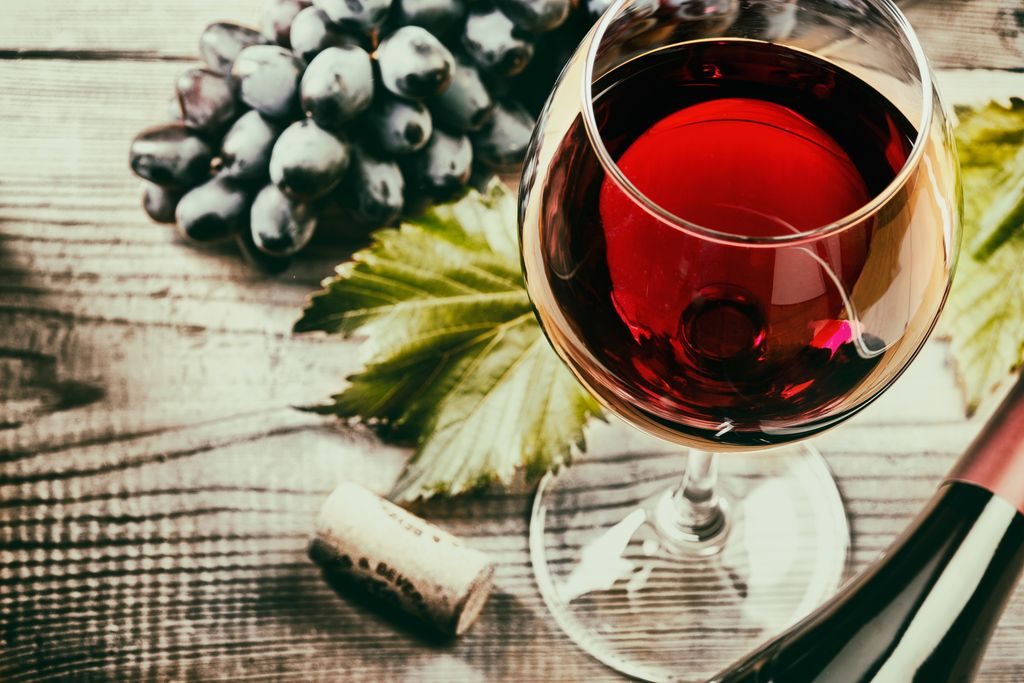Red wine
Red wine goes great with red meats like beef, lamb and duck. additionally, red wine can be a versatile ingredient in many sauces, stews and even sweet dishes!

Red wine is an alcoholic drink made from fermented grapes. Red wines are commonly paired with red meats like beef, lamb and duck. Red wine is also commonly used for cooking.
The difference between red wine and white wine lies in how the wine is produced. To make red wine winemakers ferment the grape juice with the grape skin, seeds and even sometimes the stalks. The skin, seeds and stalks give the wine that deep colour and a more robust taste.
Types of red wine
There are over 10,000 different varieties of wine grapes in the world. With such a staggering amount of grape variety, there is no wonder why there are so many different kinds of wine! With so much to chose from its difficult to know where to start.
Wines are either named after the type of grape used to make (Merlot, Pinot Noir, Cabernet Sauvignon and Malbec) them or the region they come from (like Chianti and Bordeaux)
The important thing to remember is that any wine you like is a good wine, that’s the first step! The next is to learn a little about the terminology so you can confidently explore other types and broaden your horizons!
Most red wine is still but there are some types that are lightly sparkling.
Sweetness
Wines have varying levels of sweetness and it all depends on how they are made. During fermentation, the sugar from the grapes is converted into alcohol. The sugars that are left are called ‘residual sugars’ and this affects the taste of the wine. Wines are usually described as dry, semi-dry or sweet, here is what they mean…
- Dry – Dry red wines are low in residual sugars, the taste will taste sharp.
- Semi-dry/Off-dry – Wines that are describes as semi-dry or off-dry have more residual sugars.
- Sweet – Sweet red wines tend to be quite low in alcohol unless they are fortified. Port is a popular fortified red wine from Portugal. It is known as a dessert wine
Tannin
Tannin is a naturally occurring compound that adds bitterness to a wine. Tannin is found in the skins, seeds and stems of a wine grape. Red wine has more tannin because it is fermented with the skins. It gives red wine structure and body.
Tannins are also found in other foods like dark chocolate, cinnamon walnuts and teas.
How to serve red wine
Red wines are commonly served at room temperature, this allows the fruit flavours to come alive and it allows you to enjoy its complexity.
Most red wines need to be decanted before drinking. Decanting can improve the flavour and take away some of the bitter notes in the wine. Aerating wines can take between 30 minutes to 3 hours!
30 minutes
Zinfandel, Pinot Noir.
1 – 2 hours
Malbec, Garnacha Blend, Cabernet Sauvignon, Merlot, Sangiovese.
2 – 3+ hours
Mourvèdre/Monastrell, Dão and Douro Reds, Syrah/Shiraz, Nebbiolo.
How to use red wine in cooking
Red wine can be used to add richness to stews, pasta sauces, gravy and even risottos. A classic red wine sauce is great steaks, roasts. It can be used to deglaze the pan while your meat is resting.
Red wine can also be used in deserts, red wine poached pairs is a marvellous and impressive looking sweet treat.
Red wine is used to make the winter classic mulled wine! Mulled wine is the perfect drink to warm you up in the colder months and get you ready for the festive season! Its made with red wine, mulling spices and slices of citric fruit like orange or lemon. It may seem like an odd combination but some people add a splash of red wine to hot chocolate.
Sangria is the traditional Spanish drink made with the red wine, chopped fruits (like apple, oranges and pears) and brandy or orange juice. Similar to sangria the Spanish cocktail Kalimotxo is the mixture of red wine and coke!
Red wine nutritional information
Red wine has about 85 calories per 100 grams, a large glass (250ml) of red wine is has about 214 calories.
The alcohol content varies from product to product but it usually ranges between 11 to 14%. There are about 10 units in a bottle of wine.
Alcohol should be consumed in moderation, the UK Chief Medical Officers recommend adults do not regularly drink more than 14 units per week.
You should not consume any alcohol if you are pregnant or under the age of 18.
Drinking red wine in moderation has some surprising health benefits. Having a small glass at the end of the day may be quite good for you! Red wine has high levels of antioxidants which fight free radicals in your body. Free radicles cause damage to cells, proteins and DNA which can lead to diseases like cancer, Alzheimer’s, Parkinson’s and many others.
Red wine also contains resveratrol, which has been shown to be very beneficial to health. It’s been linked to a lower risk of heart disease, stroke, and dementia.
Recipe suggestion: Lasanga, Blolgnese sauce (ragu)




